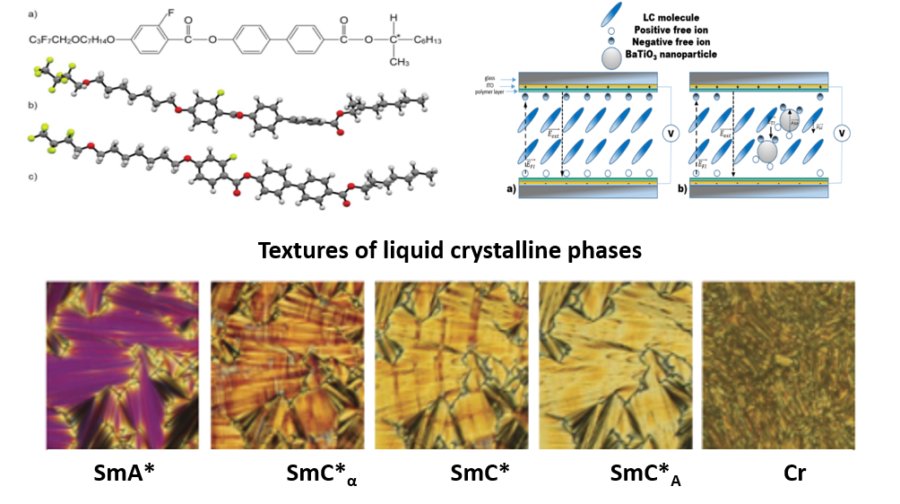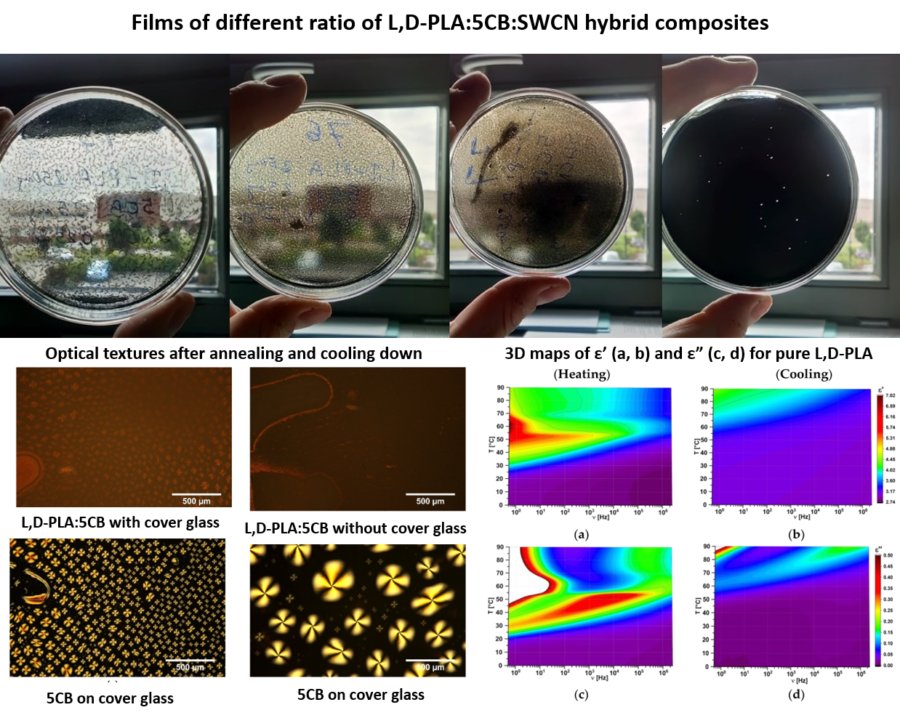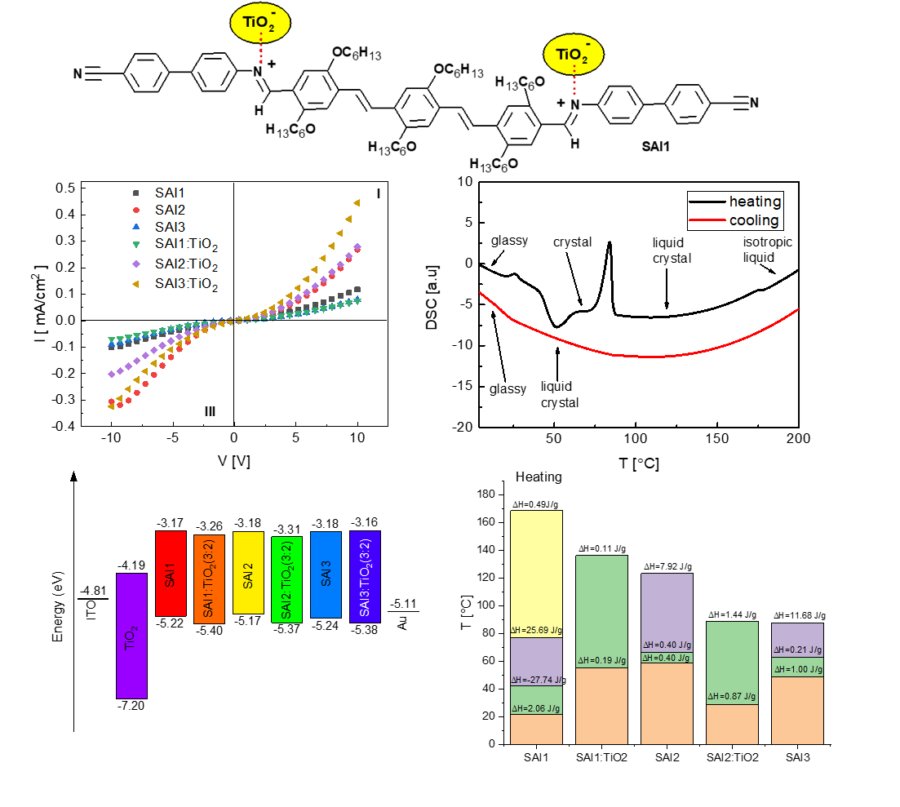Ferro- /Antiferroelectric liquid crystals are a special class of liquid crystalline materials that has been attracting the attention of scientists around the world for years. In the last few years, hybrid materials, i.e. liquid crystal (as a matrix) with the addition of nano-objects, have become also very popular. These types of materials combine the features of a liquid crystal with the properties of nanoparticles (strongly dependent on the size and shape). The physical properties of such nanocomposites can be modified by changing the concentration, shape and size of the added nanoparticles, which makes it possible to obtain materials with specific properties. In our group, we manufacture and test nanocomposites based on the smectic liquid crystalline phase (ferro- and/or antiferroelectric ones) and various nanoparticles (for example BaTiO3, Fe2O3, Au). We perform temperature measurements of the transmitted light intensity, spontaneous polarization, tilt angle and switching times, as well as imaging in polarizing contrast, calorimetric and dielectric measurements and wettability of thin nanocomposite layers.

- Sebastian Lalik, Aleksandra Deptuch, Teresa Jaworska-Goła̧b, Patryk Fryń, Dorota Dardas, Olaf Stefańczyk, Magdalena Urbańska, and Monika Marzec, Modification of AFLC Physical Properties by Doping with BaTiO3 ParticlesJ. Phys. Chem. B 2020, 124, 28, 6055–6073, https://dx.doi.org/10.1021/acs.jpcb.0c02401
- Lalik, S., Deptuch, A., Fryn, P., Jaworska-Golab, T., Dardas, D., Pociecha, D., Urbanska, M., Tykarska, M., Marzec, M., Systematic study of the chiral smectic phases of a fluorinated compound, LIQUID CRYSTALS 46:15, 2256-2268 (2019), DOI: 10.1080/02678292.2019.1622044
- Deptuch, M. Marzec, T. Jaworska-Gołąb, M. Dziurka, J. Hooper, M. Srebro-Hooper, P. Fryń, J. Fitas, M. Urbańska & M. Tykarska, Influence of carbon chain length on physical properties of 3FmHPhF homologues, Liquid Crystals, 46:15, 2201-2212 (2019), DOI: 10.1080/02678292.2019.161468
- more



